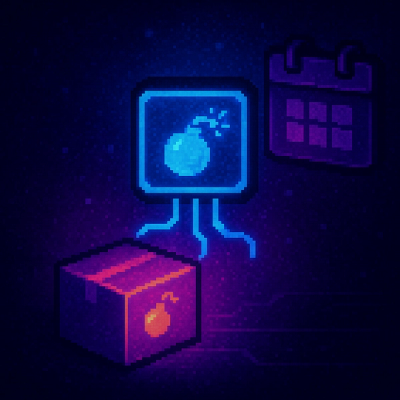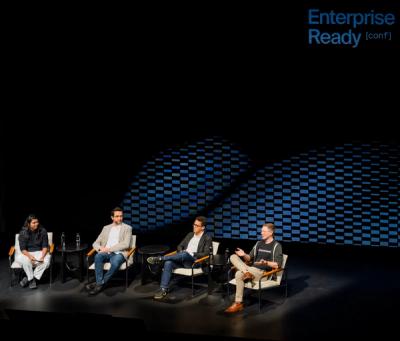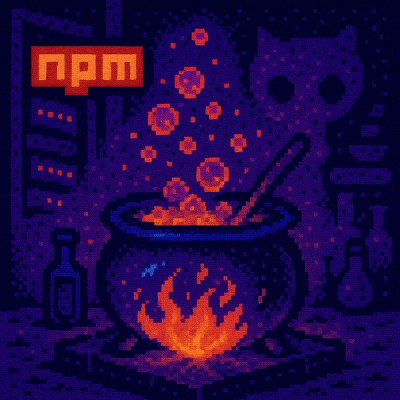
Research
/Security News
9 Malicious NuGet Packages Deliver Time-Delayed Destructive Payloads
Socket researchers discovered nine malicious NuGet packages that use time-delayed payloads to crash applications and corrupt industrial control systems.
@blockprotocol/graph
Advanced tools
Implementation of the Block Protocol Graph service specification for blocks and embedding applications
This package implements the Block Protocol Graph module for blocks and embedding applications.
If you are a block author, we have several block templates available which use this package
npx create-block-app@latest --help
The best way to get started is to read the docs.
The package exports a standard library of helper functions for interacting with a Subgraph, available from "@blockprotocol/graph/stdlib". For example
import { getOutgoingLinkAndTargetEntities } from "@blockprotocol/graph/stdlib";
// find the outgoing links and target entities for a given entity
const linkAndTargetEntities = getOutgoingLinkAndTargetEntities(
subgraph,
"entity-123",
);
for (const { linkEntity, rightEntity } of linkAndTargetEntities) {
// do something with each link and the entity it points to
}
For a full list of available functions see src/stdlib.ts
If you want to roll your own block template or embedding application, you can use this package to construct a handler for graph module messages.
yarn add @blockprotocol/graph or npm install @blockprotocol/graphTo create a GraphBlockHandler, pass the constructor an element in your block, along with any callbacks you wish to register to handle incoming messages.
For React, we provide a useGraphBlockModule hook, which accepts a ref to an element, and optionally any callbacks you wish to provide on initialization.
See npx create-block-app@latest my-block --template react for an example.
For custom elements, this package exports a BlockElementBase class
which uses the Lit framework, and sets graphModule on the instance for sending graph-related messages to the embedding application.
See npx create-block-app@latest my-block --template custom-element for an example.
You should construct one GraphEmbedderHandler per block.
It is not currently possible to wrap multiple blocks with a single handler.
To create a GraphEmbedderHandler, pass the constructor:
element wrapping your blockcallbacks to respond to messages from the blockblockEntitySubgraph: the graph rooted at the block entityreadonly: whether or not the block should be in 'readonly' modeThese starting values should also be passed in a graph property object, if the block can be passed or assigned properties.
See the here or check the TypeScript types for message signatures.
import { GraphEmbedderHandler } from "@blockprotocol/graph";
const graphModule = new GraphEmbedderHandler({
blockEntitySubgraph: { ... }, // subgraph containing vertices, edges, and 'roots' which should be a reference to the block entity
readonly: false,
callbacks: {
updateEntity: ({ data }) => updateEntityInYourDatastore(data),
},
element: elementWrappingTheBlock,
});
For React embedding applications, we provide a useGraphEmbedderModule hook, which accepts a ref to an element, and optionally any additional constructor arguments you wish to pass.
import { useGraphEmbedderModule } from "@blockprotocol/graph";
import { useRef } from "react";
export const App = () => {
const wrappingRef = useRef<HTMLDivElement>(null);
const blockEntitySubgraph = { ... }; // subgraph containing vertices, edges, and 'roots' which should be a reference to the block entity
const { graphModule } = useGraphEmbedderModule(blockRef, {
blockEntitySubgraph,
});
return (
<div ref={wrappingRef}>
<Block graph={{ blockEntitySubgraph }} />
</div>
);
};
FAQs
Implementation of the Block Protocol Graph service specification for blocks and embedding applications
The npm package @blockprotocol/graph receives a total of 4,972 weekly downloads. As such, @blockprotocol/graph popularity was classified as popular.
We found that @blockprotocol/graph demonstrated a not healthy version release cadence and project activity because the last version was released a year ago. It has 4 open source maintainers collaborating on the project.
Did you know?

Socket for GitHub automatically highlights issues in each pull request and monitors the health of all your open source dependencies. Discover the contents of your packages and block harmful activity before you install or update your dependencies.

Research
/Security News
Socket researchers discovered nine malicious NuGet packages that use time-delayed payloads to crash applications and corrupt industrial control systems.

Security News
Socket CTO Ahmad Nassri discusses why supply chain attacks now target developer machines and what AI means for the future of enterprise security.

Security News
Learn the essential steps every developer should take to stay secure on npm and reduce exposure to supply chain attacks.